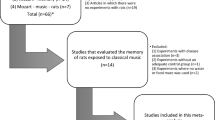Abstract
HEBB'S neurophysiological theory1 assumes that learning involves the formation of diffuse networks, termed ‘cell assemblies’, as a consequence of reverberatory neural activity which continues after the stimulation of specific receptors has ceased. According to his ‘dual trace’ hypothesis, the reverberatory neural activity leads to structural or perhaps biochemical changes at the synapse; and it is these changes which provide a neurophysiological basis for ‘permanent’ memory or learning.
Similar content being viewed by others
References
Hebb, D. O., The Organization of Behavior (Wiley. New York, 1949).
Muller, G. E., and Pilzecker, A., Z. Psychol. 1 (1900).
Duncan, C. P., J. Comp. and Physiol. Psychol., 42, 32 (1949).
Gerrard, R. W., Science, 122, 225 (1955).
Leukel, F., J. Comp. and Physiol. Psychol., 50, 300 (1957).
Thompson, R., J. Comp. and Physiol. Psychol., 50, 397 (1957).
Author information
Authors and Affiliations
Rights and permissions
About this article
Cite this article
ROSS, R. Effects of Strychnine Sulphate on Maze Learning in Rats. Nature 201, 109–110 (1964). https://doi.org/10.1038/201109a0
Issue Date:
DOI: https://doi.org/10.1038/201109a0
- Springer Nature Limited





